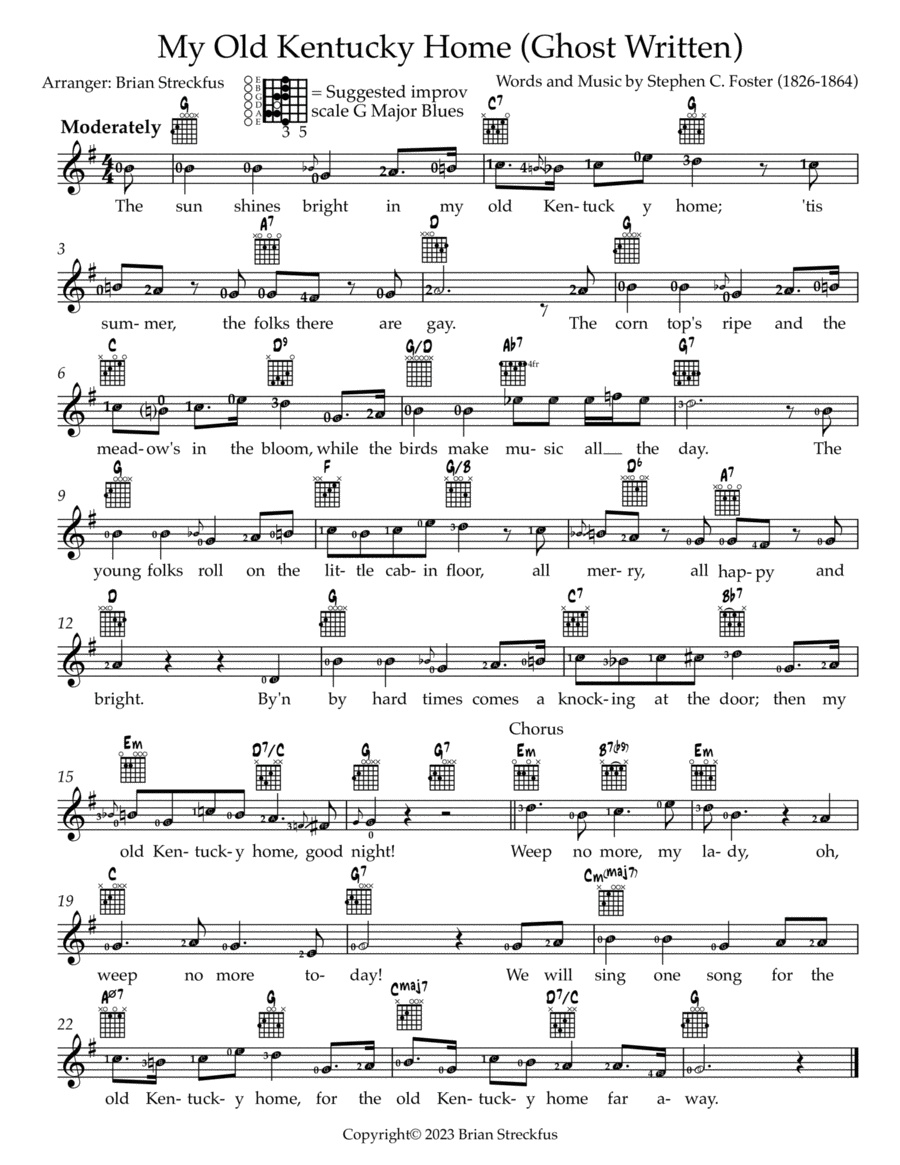Guitar - Level 2 - Digital Download SKU: A0.1168489 Composed by Stephen Foster. Arranged by Brian Streckfus. Country,Folk,Instructional,Pop,Singer/Songwriter. Chords/Lyrics. 1 pages. Brian Streckfus #768792. Published by Brian Streckfus (A0.1168489). If you are looking for a historically accurate version, I would just get Hal Leonard's publications of it. This version really sprinkles some razzle dazzle on an otherwise straightforward public domain song in G major, though it does not use the exact original melody.1. The original melody is NOT intact, this is ghostwritten. Notes were flatted to give a bluesier sound.  2. The chords are very modern, despite this song being written in the mid 1850s. 3. Grace notes added 4. Background harmonies now have more thought put into part writing, originality, being idiomatic on guitar, and making the melody the forefront. 5. Left hand fingerings added to aid in sight-reading.6. Letter names added to note heads to aid in sight-reading.7. I like versions like this because it could be used for a guitarist who doesn't sing, a guitarist who does sing, or a guitarist in a band. In otherwords, the more band members, the more you are just focusing on background chords, the more you are a one-person band, the more you have to take everything in. Tips:1. I arranged this so that students could see how blues scales work as I drenched this song in more blues than it originally had (Bb - B...F - F#...E minor blues and G major blues respectively.) You'll notice I don't stay on these dissonant blues notes for very long, that's why there's so many grace notes in this song.2. The D9 in measure 6 was originally a D7. Some extensions like this don't really change the scale in use.3. The Ab7 in measure 7 was originally a D7, making the Ab7 a tritone substitution. If you know the key of G major well, that chord should stick out like a sore thumb. 4. The Bb7 in measure 14 was originally a G7. I call these kind of substituitions mediant substitutions as they are similiar to jazz tritone substitions, but at a 3rd instead of a tritone.5. The Cm(maj7) was originally a C major chord. This is a modal borrowing composition technique of borrowing from the parrallel minor, in this case, G minor.
